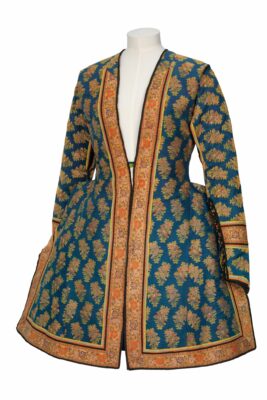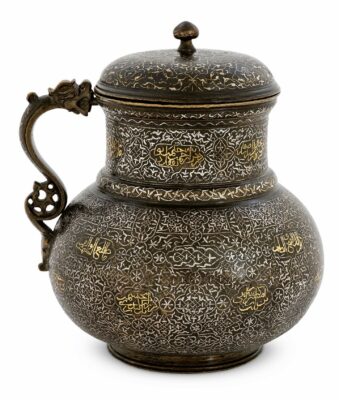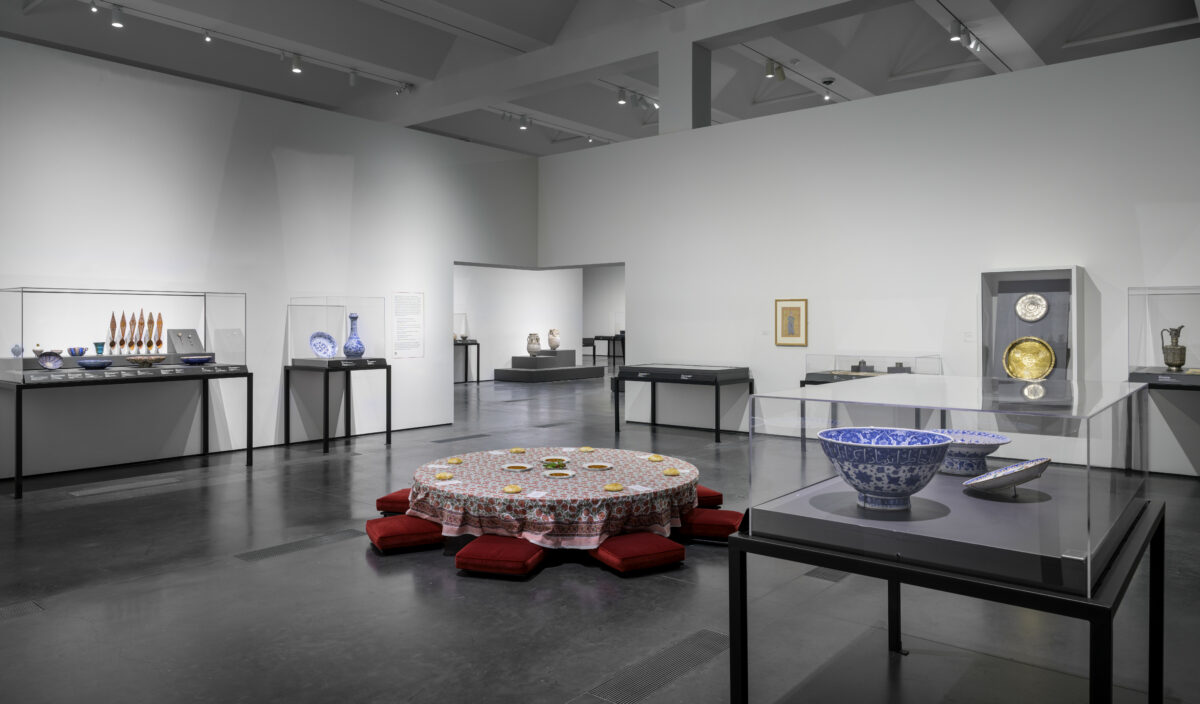“Dining with the Sultan: The Fine Art of Feasting”
Munching on crocodile eggs and gazelle fattened on human milk
by Bondo Wyszpolski

Gordon Knight Smith, photo © Museum Associates/LACMA
I knew exactly what to expect before entering the dimmed hall, the perfumed incense wafting through the doors and into the courtyard, the sinuous girls in their diaphanous blouses handing out demitasses of coffee smelling pungently of pipe tobacco, shoe polish, and sardines, the invitations to remove our shoes and to recline on thick Persian carpets near one of the many food carts, and the proffered bowls of pecans, almonds, walnuts, and pistachios while one of the many strolling minstrels pauses to strum a long-forgotten tune on a long-forgotten instrument.
Naturally, the art could wait. What was of foremost importance was easing into the mood and temperament of the treasures on display. Several trays were brought by barefoot young people wearing anklets and bangles. Did I wish to try the hot dumplings served with curried mice? It was a favorite of Ardashir III. Yes, of course! And the thrushes stuffed with bergamot? Please! And these large red and green cicadas (that resemble shrimp when you peel back their wings)? You don’t need to ask! Roasted locusts and immature bees? Yum! And, more jewelry for the palate, a dish of alcoholic black dates? Ahh, Mademoiselle, you have seduced me!

Museum of Islamic Art, Doha, photo © Museum of Islamic Art, Doha, Qata
But who wants to peer down into an empty bowl nestled behind glass? If the Japanese were mounting this show at least they’d have created some realistic models of food to go along with it, since no Sultan or Sultaness ever had to stare into a dish with nothing in it.
So we get to mull over lots of dishes minus what truly gives them life (real food!), as well as cups, bottles, beakers, bowls, ewers, jugs, basins, flasks, pitchers, canteens, carafes, cauldrons and coffee pots. And then we get to look at some old manuscripts, folios, watercolors and a few oil paintings. Some stiff and dried-out clothing has been included: a man’s cloak, a woman’s coat, and so on. The musical instruments are intriguing, with names you don’t often hear around these parts: ud, zurna, naqqara, taus, tombak, rubab, kamancha. Tap into your phone to hear a few lonely notes of each.

Lastly, there is the Damascus Room, a reconstructed reception parlor from the late Ottoman period, ornately decorated, which we can enter and glance around, but will be shooed out of if we sit on the cushions and light up a cigarette or a Turkish cigar.
In the end, you aren’t dining with the Sultan; you’re only glancing at his leftovers and wondering what it would really be like, munching crocodile eggs, stewed squirrel, lemonade salad, and other delicacies. We left hungry and stopped for take-out on the way home.
Dining with the Sultan: The Fine Art of Feasting, curated by Linda Komaroff, through August 4 at LACMA, 5905 Wilshire Blvd, Los Angeles. Info at lacma.org. PEN










